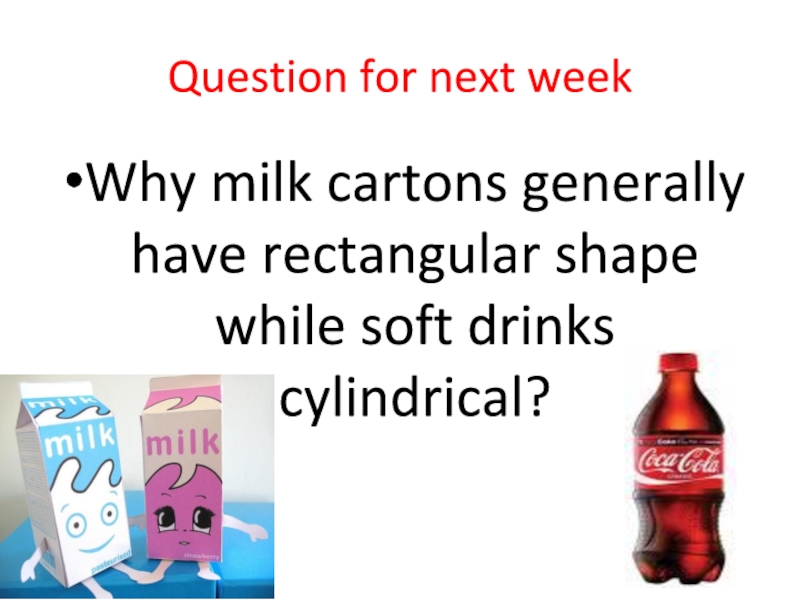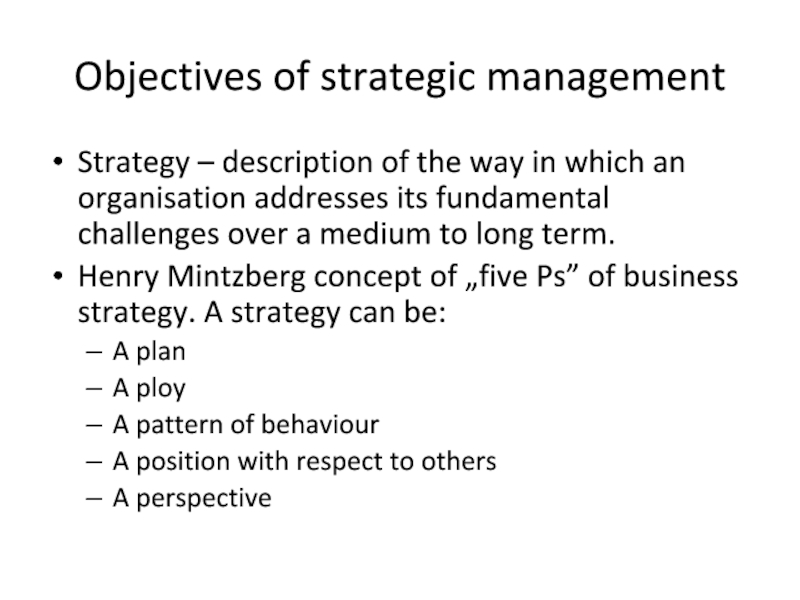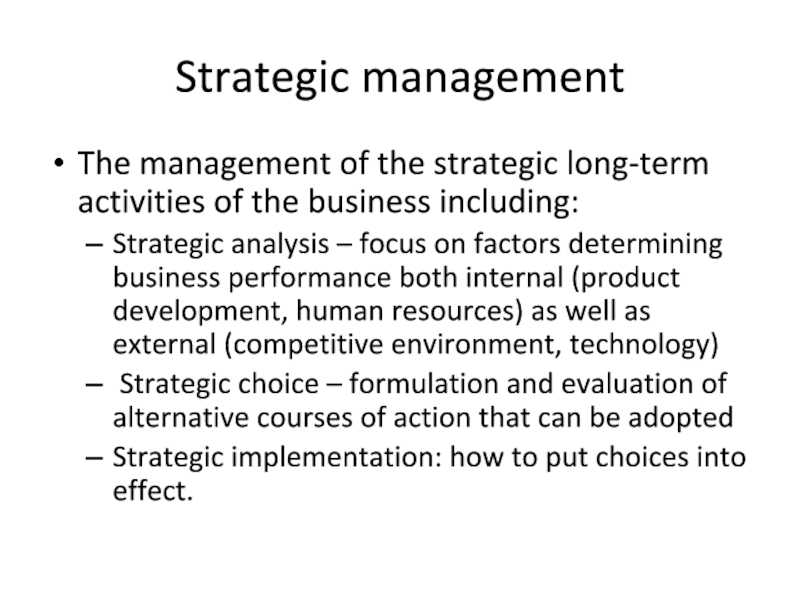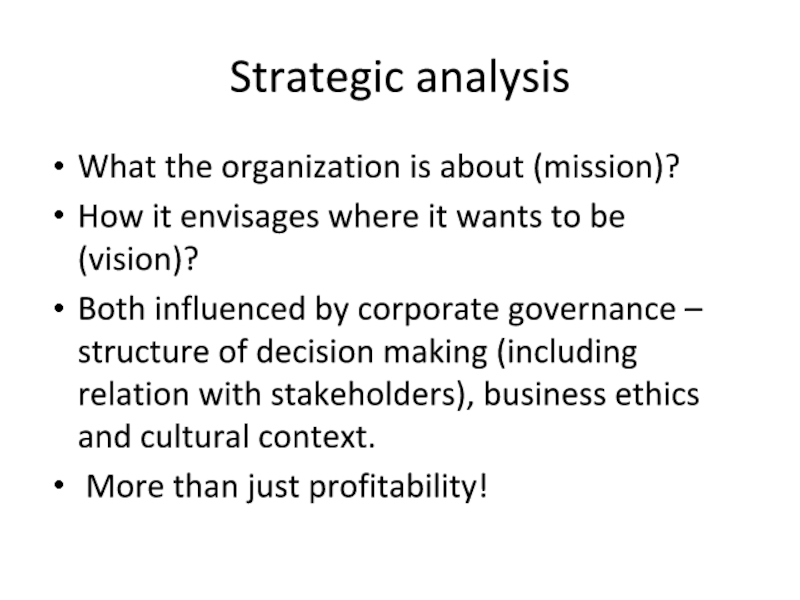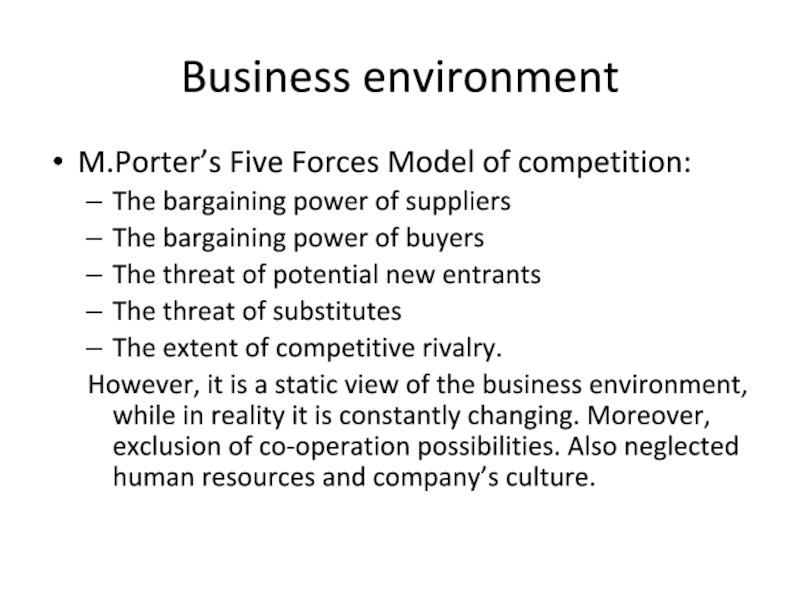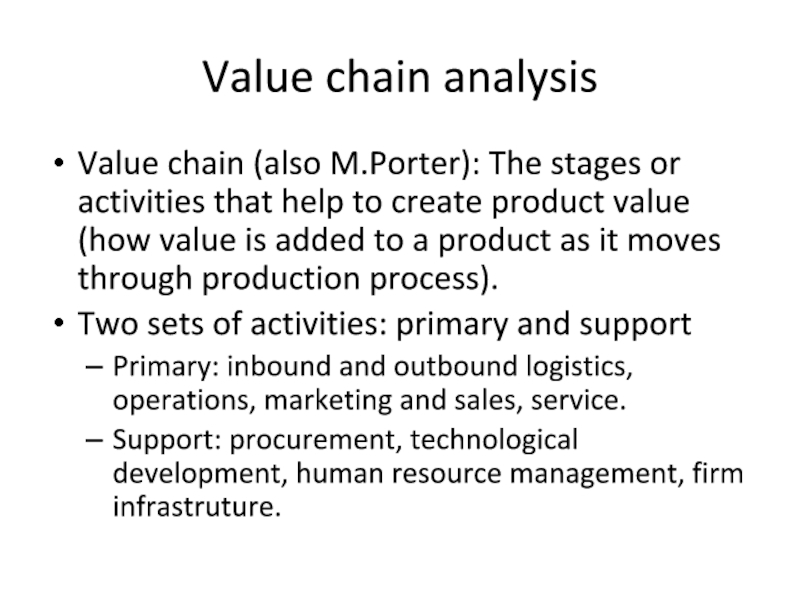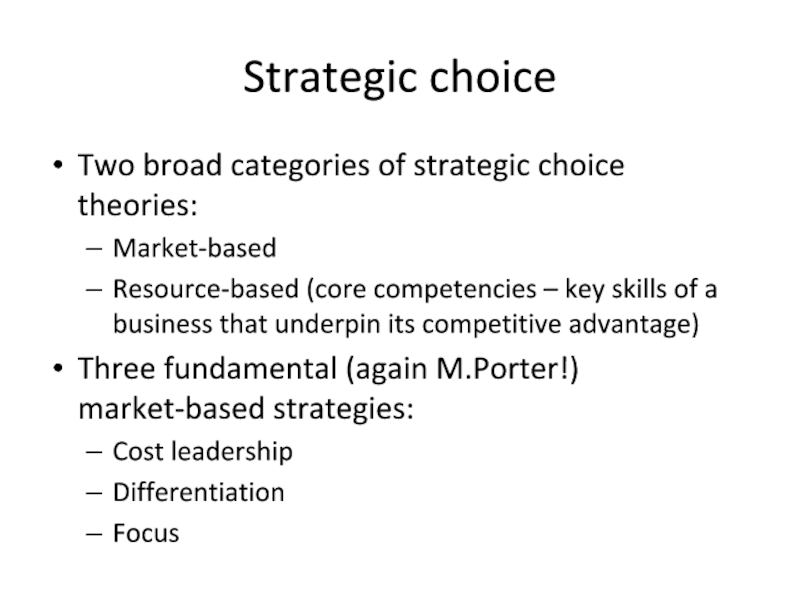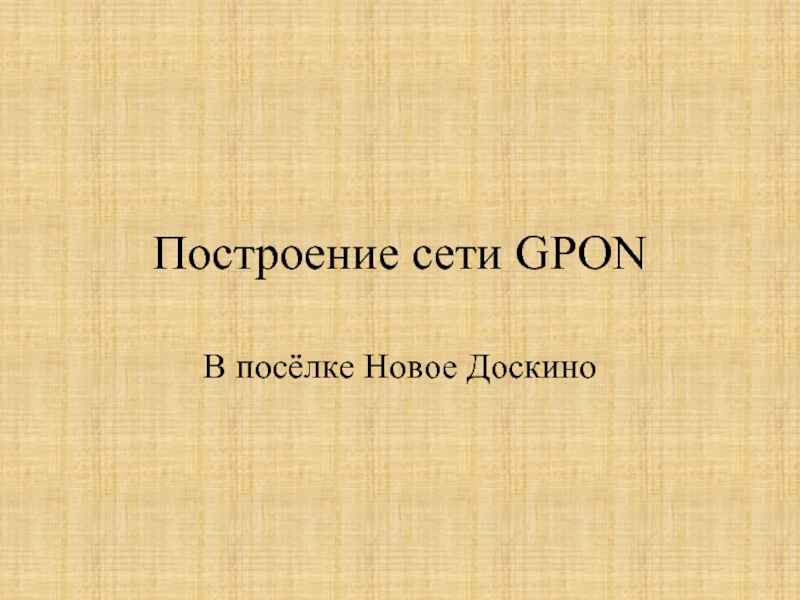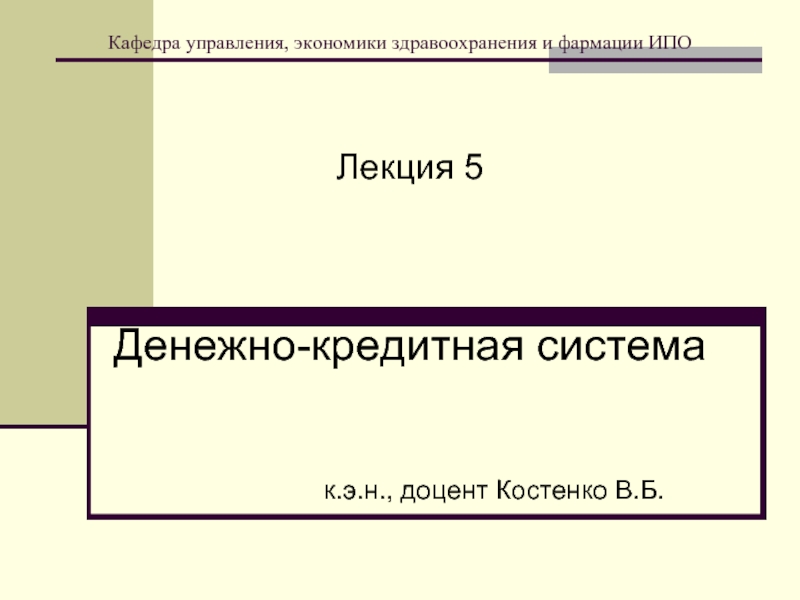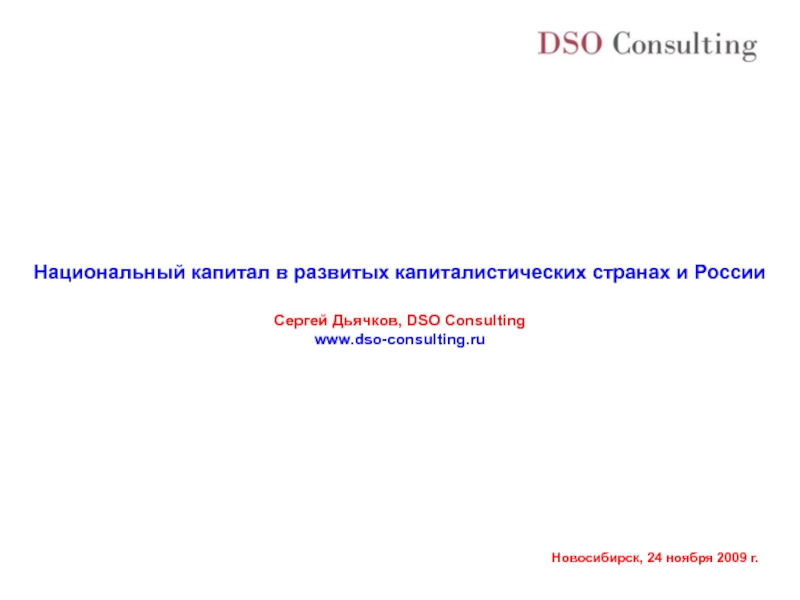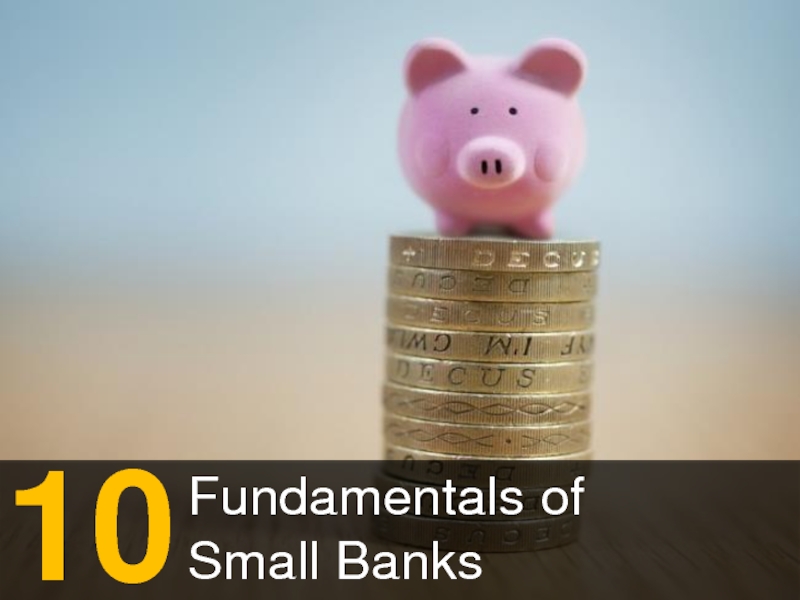- Главная
- Разное
- Дизайн
- Бизнес и предпринимательство
- Аналитика
- Образование
- Развлечения
- Красота и здоровье
- Финансы
- Государство
- Путешествия
- Спорт
- Недвижимость
- Армия
- Графика
- Культурология
- Еда и кулинария
- Лингвистика
- Английский язык
- Астрономия
- Алгебра
- Биология
- География
- Детские презентации
- Информатика
- История
- Литература
- Маркетинг
- Математика
- Медицина
- Менеджмент
- Музыка
- МХК
- Немецкий язык
- ОБЖ
- Обществознание
- Окружающий мир
- Педагогика
- Русский язык
- Технология
- Физика
- Философия
- Химия
- Шаблоны, картинки для презентаций
- Экология
- Экономика
- Юриспруденция
Introduction to business. Business strategy презентация
Содержание
- 1. Introduction to business. Business strategy
- 2. Question for next week Why milk cartons generally have rectangular shape while soft drinks cylindrical?
- 3. Objectives of strategic management Strategy – description
- 4. Strategic management The management of the strategic
- 5. Strategic analysis What the organization is about
- 6. Business environment M.Porter’s Five Forces Model of
- 7. Value chain analysis Value chain (also M.Porter):
- 8. Strategic choice Two broad categories of strategic
- 9. Strategy in a global economy Why go
Слайд 2Question for next week
Why milk cartons generally have rectangular shape while
soft drinks cylindrical?
Слайд 3Objectives of strategic management
Strategy – description of the way in which
an organisation addresses its fundamental challenges over a medium to long term.
Henry Mintzberg concept of „five Ps” of business strategy. A strategy can be:
A plan
A ploy
A pattern of behaviour
A position with respect to others
A perspective
Henry Mintzberg concept of „five Ps” of business strategy. A strategy can be:
A plan
A ploy
A pattern of behaviour
A position with respect to others
A perspective
Слайд 4Strategic management
The management of the strategic long-term activities of the business
including:
Strategic analysis – focus on factors determining business performance both internal (product development, human resources) as well as external (competitive environment, technology)
Strategic choice – formulation and evaluation of alternative courses of action that can be adopted
Strategic implementation: how to put choices into effect.
Strategic analysis – focus on factors determining business performance both internal (product development, human resources) as well as external (competitive environment, technology)
Strategic choice – formulation and evaluation of alternative courses of action that can be adopted
Strategic implementation: how to put choices into effect.
Слайд 5Strategic analysis
What the organization is about (mission)?
How it envisages where it
wants to be (vision)?
Both influenced by corporate governance – structure of decision making (including relation with stakeholders), business ethics and cultural context.
More than just profitability!
Both influenced by corporate governance – structure of decision making (including relation with stakeholders), business ethics and cultural context.
More than just profitability!
Слайд 6Business environment
M.Porter’s Five Forces Model of competition:
The bargaining power of suppliers
The
bargaining power of buyers
The threat of potential new entrants
The threat of substitutes
The extent of competitive rivalry.
However, it is a static view of the business environment, while in reality it is constantly changing. Moreover, exclusion of co-operation possibilities. Also neglected human resources and company’s culture.
The threat of potential new entrants
The threat of substitutes
The extent of competitive rivalry.
However, it is a static view of the business environment, while in reality it is constantly changing. Moreover, exclusion of co-operation possibilities. Also neglected human resources and company’s culture.
Слайд 7Value chain analysis
Value chain (also M.Porter): The stages or activities that
help to create product value (how value is added to a product as it moves through production process).
Two sets of activities: primary and support
Primary: inbound and outbound logistics, operations, marketing and sales, service.
Support: procurement, technological development, human resource management, firm infrastruture.
Two sets of activities: primary and support
Primary: inbound and outbound logistics, operations, marketing and sales, service.
Support: procurement, technological development, human resource management, firm infrastruture.
Слайд 8Strategic choice
Two broad categories of strategic choice theories:
Market-based
Resource-based (core competencies
– key skills of a business that underpin its competitive advantage)
Three fundamental (again M.Porter!) market-based strategies:
Cost leadership
Differentiation
Focus
Three fundamental (again M.Porter!) market-based strategies:
Cost leadership
Differentiation
Focus
Слайд 9Strategy in a global economy
Why go global?:
Market size
Increased profitability
Location economies –
internationalization of value chain enable to place each value –created activity in the most appropriate place.
Cost reduction (scale economies, learning by doing)
Using core competencies
Spreading risk
Keeping up with rivals
Cost reduction (scale economies, learning by doing)
Using core competencies
Spreading risk
Keeping up with rivals

